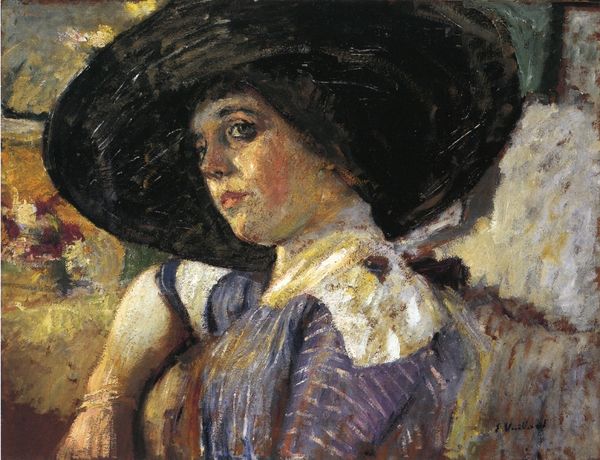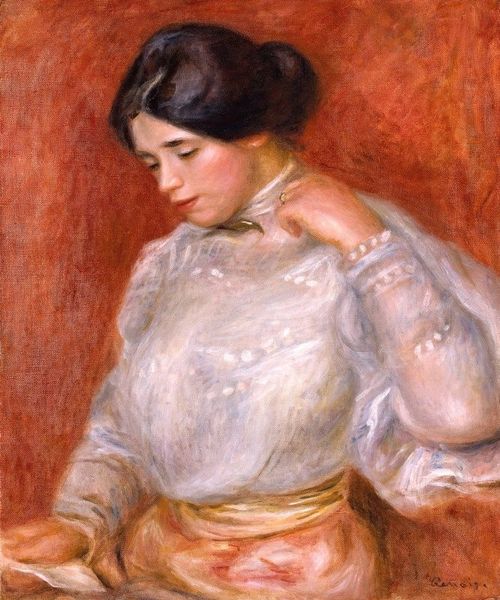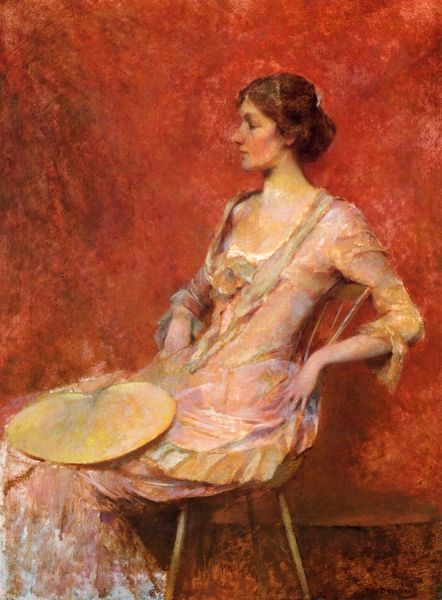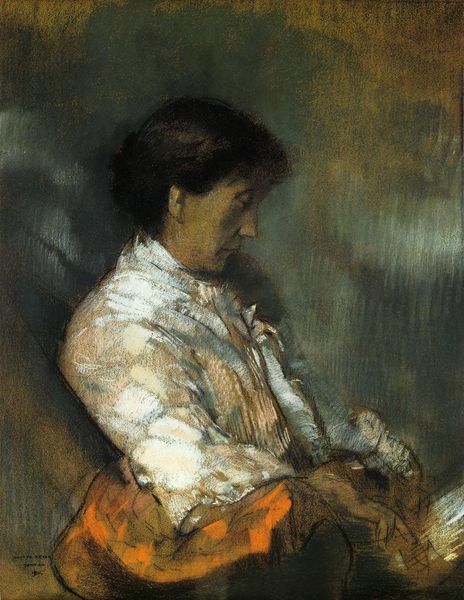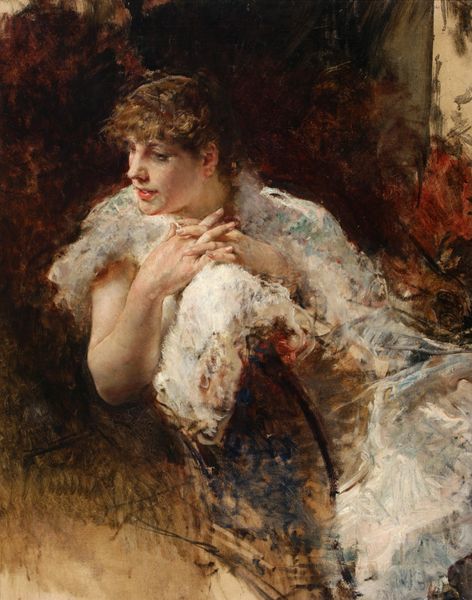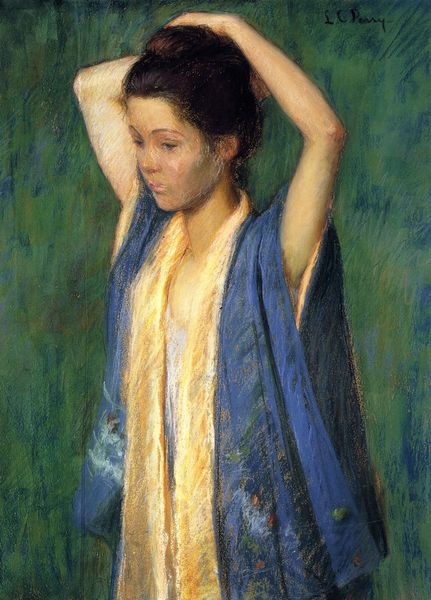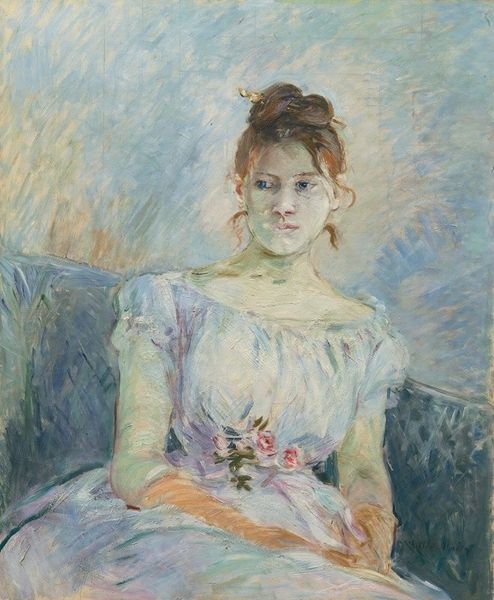
Copyright: Public domain
Curator: The painting before us, entitled "Plink-a-Plong," was crafted in 1893 by the Australian artist Tom Roberts. The medium is oil on canvas. My initial impression is one of hushed domesticity and intimate artistry. What are your thoughts? Editor: A solitary, almost melancholic stillness permeates the canvas. The ochre background radiates warmly, and contrasts beautifully with her pale features. The impressionistic style is used to capture a moment of private musical expression, very in keeping with the Victorian era, wouldn't you agree? Curator: Indeed. Intimism, in painting, explored the psychological space of private life, especially of women, in the 1890s, with an awareness of interior decoration and design as signs of inner emotion. What cultural symbolism could you glean from the presence of the banjo here? Editor: Well, banjos were already culturally loaded objects. In the US they are most notably connected to minstrel shows, where it was associated with crude racial stereotypes. This is an Australian painter exhibiting a sensitivity to popular music forms - either ironically or in earnest. Curator: Quite so. I would note how she holds the instrument almost tentatively, her gaze averted, lost in the act of creation, with no public audience to impress. Flowers pinned to her upper bodice suggest a complex portrait—flowers in general were strongly aligned with a kind of idealized version of femininity. The painting’s strength rests in the fact that this is not a performance as spectacle. Editor: This does have an immediacy; Roberts really evokes the era. It feels almost voyeuristic, to observe the performance of private life by the new rising middle class, but it’s a particularly humanising window. Curator: I appreciate your perspective, highlighting the work's contextual resonances. It has certainly provided plenty of insight to consider the complexities inherent in an intimate snapshot. Editor: And for me, considering art’s reflection on identity construction during cultural transition, art and identity formation in an historical context adds depth. Thank you.
Comments
No comments
Be the first to comment and join the conversation on the ultimate creative platform.
